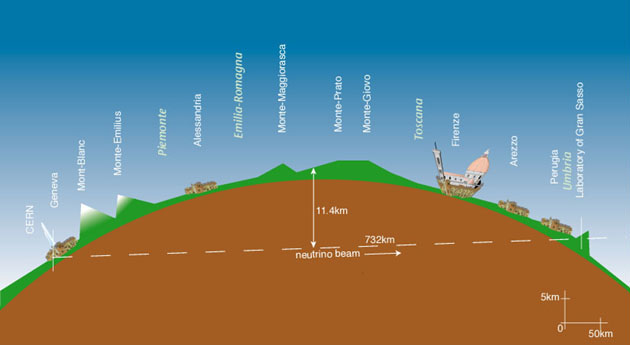| 1. The scientific basis of the CNGS project |
| 1.3 CNGS - a long baseline neutrino beam The CNGS project, already referred to in the LHC Impact Report (page 57), consists in producing a neutrino beam at CERN (basically of the nm type) and sending it towards the Gran Sasso laboratory. A beam of this type is generated from collisions of protons in a beam with protons and neutrons in a graphite target, focussing the particles produced (pions and kaons in particular) in the desired direction. The pions and kaons, like the muons, are very short-lived particles, unlike the protons and electrons which are the stable constituents of matter surrounding us. The pions and kaons decay in flight at high energies. The products of such decay, muons and neutrinos, continue to travel in generally the same direction as the parent particles, pions or kaons. |
| Figure 5: Route taken by neutrinos through the Earth’s crust from CERN to the Gran Sasso laboratory |
| To direct the neutrinos towards
Gran Sasso, all that need be done, therefore, is to focus the pions and kaons in that
direction. The decay of these particles in a vacuum tunnel about one kilometre long
creates the neutrino beam. Because of the low probability of interaction, most of these
neutrinos will not be interrupted as they pass through the earth and will reach Gran
Sasso. Figure 6 on page 11 shows the project set-up in map form. Calculations show that when the neutrino beam reaches Gran Sasso, 732 km from CERN, it will have a diameter of about two kilometres. |
